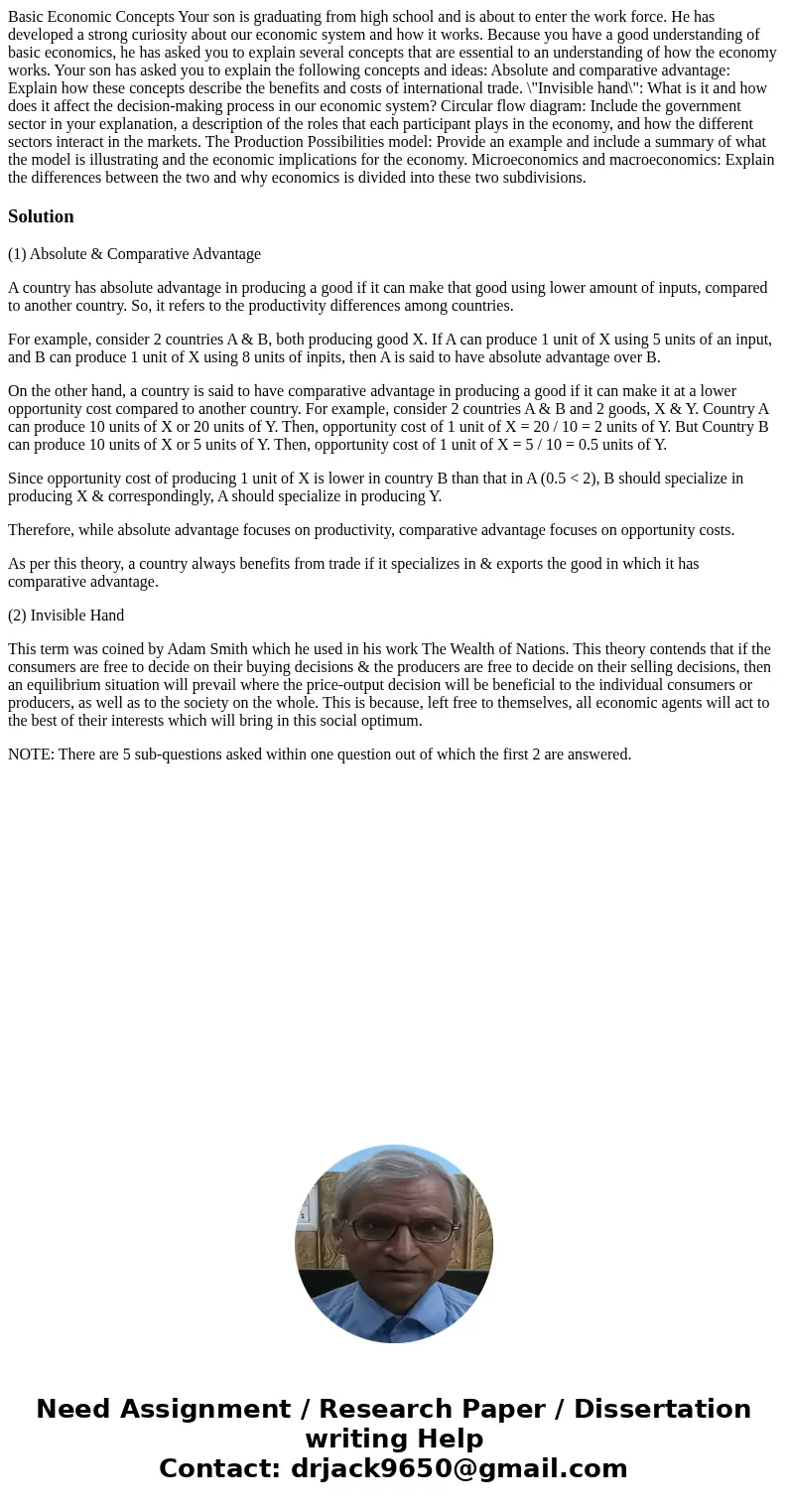Basic Economic Concepts Your son is graduating from high sch
Basic Economic Concepts Your son is graduating from high school and is about to enter the work force. He has developed a strong curiosity about our economic system and how it works. Because you have a good understanding of basic economics, he has asked you to explain several concepts that are essential to an understanding of how the economy works. Your son has asked you to explain the following concepts and ideas: Absolute and comparative advantage: Explain how these concepts describe the benefits and costs of international trade. \"Invisible hand\": What is it and how does it affect the decision-making process in our economic system? Circular flow diagram: Include the government sector in your explanation, a description of the roles that each participant plays in the economy, and how the different sectors interact in the markets. The Production Possibilities model: Provide an example and include a summary of what the model is illustrating and the economic implications for the economy. Microeconomics and macroeconomics: Explain the differences between the two and why economics is divided into these two subdivisions.
Solution
(1) Absolute & Comparative Advantage
A country has absolute advantage in producing a good if it can make that good using lower amount of inputs, compared to another country. So, it refers to the productivity differences among countries.
For example, consider 2 countries A & B, both producing good X. If A can produce 1 unit of X using 5 units of an input, and B can produce 1 unit of X using 8 units of inpits, then A is said to have absolute advantage over B.
On the other hand, a country is said to have comparative advantage in producing a good if it can make it at a lower opportunity cost compared to another country. For example, consider 2 countries A & B and 2 goods, X & Y. Country A can produce 10 units of X or 20 units of Y. Then, opportunity cost of 1 unit of X = 20 / 10 = 2 units of Y. But Country B can produce 10 units of X or 5 units of Y. Then, opportunity cost of 1 unit of X = 5 / 10 = 0.5 units of Y.
Since opportunity cost of producing 1 unit of X is lower in country B than that in A (0.5 < 2), B should specialize in producing X & correspondingly, A should specialize in producing Y.
Therefore, while absolute advantage focuses on productivity, comparative advantage focuses on opportunity costs.
As per this theory, a country always benefits from trade if it specializes in & exports the good in which it has comparative advantage.
(2) Invisible Hand
This term was coined by Adam Smith which he used in his work The Wealth of Nations. This theory contends that if the consumers are free to decide on their buying decisions & the producers are free to decide on their selling decisions, then an equilibrium situation will prevail where the price-output decision will be beneficial to the individual consumers or producers, as well as to the society on the whole. This is because, left free to themselves, all economic agents will act to the best of their interests which will bring in this social optimum.
NOTE: There are 5 sub-questions asked within one question out of which the first 2 are answered.

 Homework Sourse
Homework Sourse